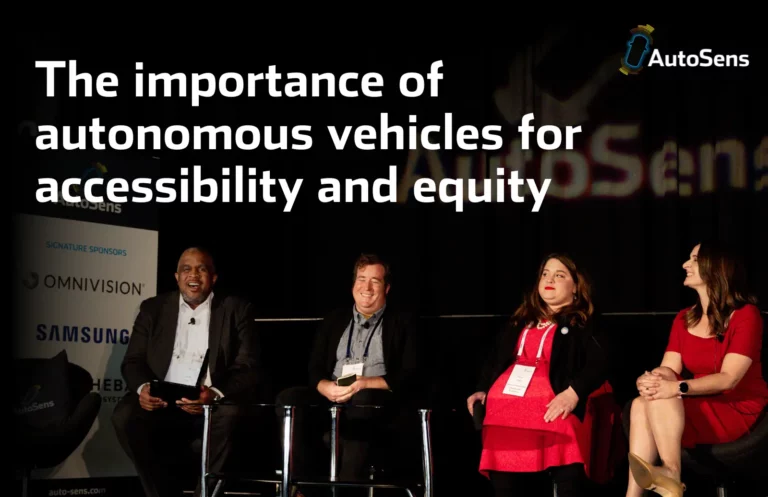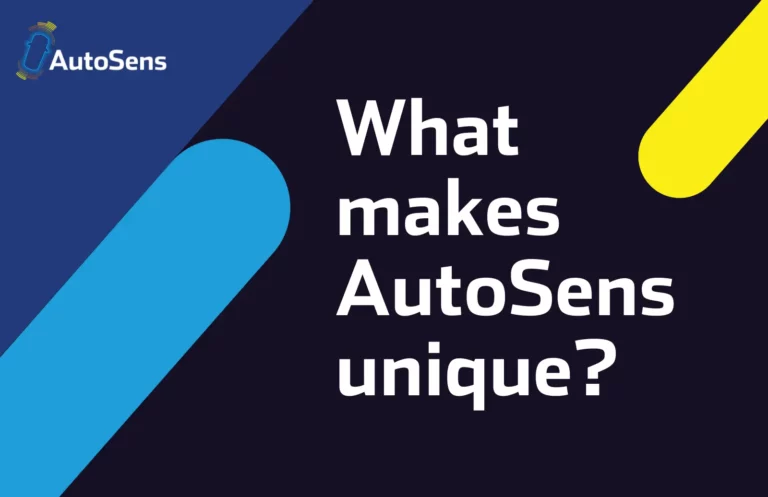You can find the agendas from last September for the AutoSens and InCabin events here! It’s time to gain control of ADAS and autonomous vehicle technology development and start your adventure.
With over 80+ speakers in the top of the leaderboard joining our stages across four days, AutoSens and InCabin promise to be the best week of the second half of this year for technologists and engineers in all disciplines of vehicle perception.
AutoSens (Sept 12-14) is for you, if you are interested in exterior sensor perception as our agenda will cover 12 core themes across 3 specialist tracks from the changing face of the ADAS and automotive market to the approaches to sensor fusion in automotive perception and the architecture and data flow, AI and machine learning considerations for imaging.
If what you are looking for instead is to hear more about interior sensor perception, then our inaugural InCabin event (Sept 15) is what you need. We will focus on the regulatory update from EuroNCAP, the critical functionality in terms of delivering safety and delivering great mobility experiences and how DMS and ADAS can work well together amongst others.
Join this Multiplayer adventure full of networking rewards on September 12-15, where the only way to win is by collaborating with fellow players of the entire supply chain.last

Technical advancements and the race to reach full autonomy is gathering apace in the auto industry. With these advancements come questions and challenges for the auto community. The number of sensors in cars is increasing, and we need to assess what this means for sensor integration, sensor degradation and sensor fusion. With each new advancement comes a different set of challenges for the security and safety of cars – how can we future proof cars and can the industry deliver expected standards in both of these areas? Software integration is now an integral part of auto design, and, with the emphasis on software expanding, we seek to answer what this means for future industry collaborations and supply chains.

From development to approval and in-service safety of AVs in Europe
Safety in automated vehicles can not be underestimated and the challenges to achieve this are complex and varied. Cristina Galassi from the European Commission will give an overview on EU legislation.
Tuesday 13th Sept | 9 am | Mezzanine Stage

Automotive Image Sensor Key Characteristics Impacting Sensing for ADAS and AV Systems
Image quality goes hand in hand with safety, with image sharpness and resolution in combination with total signal to noise ratios being essential considerations. onsemi will be exploring this further in addition to looking at limitations of basic HDR pixel architectures in relation to detecting colours and features.
Tuesday 13th Sept | 9:30 am | Mezzanine Stage

Optimally Connecting Sensors into the EE-Architecture
As the number of sensors continually increase in cars and progress in autonomous driving functions optimal sensor integration is key. Explore this further with Dr Kirsten Matheus from BMW when she presents in the achieving the optimal architecture and data flow session.
Tuesday 13th Sept | 4:55 pm | Mezzanine Stage

Time-of-Flight: from the basics to advanced implementations
In this tutorial, you will learn the overall working principles of ToF devices, the difference, advantages and disadvantages of direct ToF and indirect ToF, the alternative techniques to implement ToF devices in silicon, the influence of semiconductor technology on the performance of ToF devices, and the implementation and results of new CMOS image sensor technologies in the ToF world.
Monday 12th Sept | 2:00 pm | Mezzanine Stage

TheFuture of Sensing for Deploying Avs at Scale
Cruise’s perspective on core sensing technology, industrialization, challenges, and opportunities to support next generation and beyond sensing needs for mass production and deployment of AVs, including industrial challenges.
Wednesday 14th Sept | 2:00 pm | Mezzanine Stage

The launch into in cabin monitoring has been talked about for a long time but not many people have been actively doing it for very long, as such there is a lot of misunderstanding about what the limits of in cabin sensing are. The InCabin agenda seeks to clear up these misunderstandings and revoke the belief that it is just about building algorithms. You can see from the diversity of topics covered on the InCabin agenda that it is a lot more than just a software problem, and our technical speakers will address some of the key problems in the in-cabin sensing domain.

Regulatory update from EuroNCAP
Starting from next year, Euro NCAP will start assessing direct driver state monitoring systems, as part of its 5-star rating programme. As In-Cabin technologies evolve rapidly, Euro NCAP sees their potential in providing new angles to improve the life-saving performance of ADAS.
In this presentation, Adriano Palao, Technical Manager – ADAS & AD, will deep dive into the requirements included in the 2023 protocol, alongside an outlook for In-Cabin monitoring assessment as part of its 2030 Roadmap.
Thursday 15th Sept | 9:00 am

Understanding the activity and behavioural context for all cabin occupants
Four exciting presentations make up this technical session to cover DMS validation, measuring and demystifying drowsiness, activity recognition of all occupants and pose estimation, given by Tobii, Smart Eye, Datagen and Optalert. This session will look at testing methodologies as well as how to identify the right metrics, and the importance of the right “Ground Truth” in the development of any drowsiness detection system. Attendees will also learn how to develop an activity recognition system, from data collection and annotation to integration on a System on Chip and understand how human-centric synthetic data can generalize well to the real world.
Thursday 15th Sept | 2:20 pm

How to enable the next generation of In Cabin imagers to expand additional use cases than drowsiness and inattention?
Building on Charles Kingston’s presentation at AutoSens Detroit, which detailed the imaging parameters that make a difference when performing DMS and OMS with one single camera localized in a central position with RGB IR capabilities, and highlighted the different tradeoffs that were at stake as well as the classical ways of addressing the problem. STMicroelectronics are bringing this to the next level, and will share with the InCabin community the results of 2 years of collaboration with leaders of the In Cabin ecosystem, aiming at identifying innovative ways to tackle with these tradeoffs. Imaging standard KPIs are important as highlighted by Charles’ presentation, however, what will truly make the difference for the application is the specific features that are required in order to not choose anymore between the best possible color image and the best possible IR image.
Thursday 15th Sept | 12:15 pm

Panel discussion: the many use-cases of in-cabin sensing.
There are many use-cases of in-cabin sensing and members of the InCabin advisory board will be coming together to discuss what functionality is critical in terms of delivering safety and delivering great mobility experiences? What use-cases do we expect to be viable? How diverse are the requests for functionality and what will the added value be?
Thursday 15th Sept | 10:30 am

Round table discussions
You can also be a part of the conversation by joining our Round table Discussion sessions, which will seek to answer pertinent questions such as “What are the limits of in-cabin sensing?”, “Is lab simulation acceptable enough?” and “What are the requirements to meet and keep five-star ratings?” Please contact Hayley on [email protected] if you would be interested in leading a discussion.
Tuesday 13th Sept | 4:45 pm











